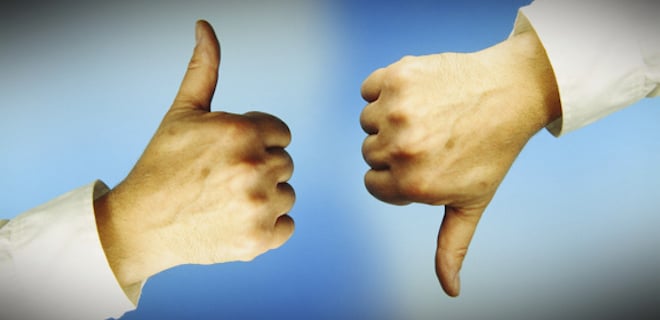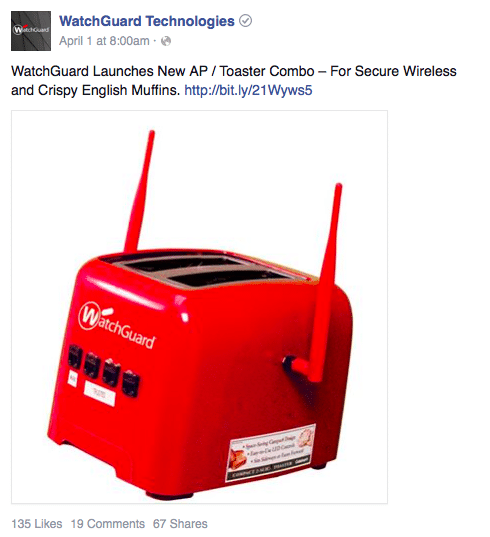April Fools’ Day is that special time of year people play practical jokes and spread hoaxes. And brands are well known for getting in on the fun too. But jokes can be hit or miss. This can be seen in jokes like the successful Hamburger Helper rap album or the ill-fated Gmail “drop mic” prank.
So what makes an April Fools’ pranks be a success or failure? In today’s post, I examine two brands’ campaigns and dig into how to do them right.
Jeers: Aerie for American Eagle
In mid-March 2016, American Eagle’s label Aerie debuted its underwear line for men with a body positive campaign called #AerieMAN. The gesture was targeted toward the “normal guy” with the sentiment “the real you is sexy.” Seen as a fun way of making body positive conversations more inclusive, it was initially well received. However, later pairing it with April Fools’ left a bad taste in many people’s mouths.
[wpdevart_youtube]2lXUgD_X-D8[/wpdevart_youtube]
On April Fools’ Day this year, American Eagle revealed that the campaign was a parody of its #AerieREAL—an actual body positive marketing campaign. The revelation around this light-hearted attempt resulted in an understandably swift backlash. It even seems reminiscent of the body shaming statements that lead to Abercrombie’s former CEO Mike Jeffries resigning.
https://twitter.com/astrolexi/status/715911615737110528
Making less than perfect bodies a punchline on April Fool's is SO funny you guys @AEO https://t.co/Iq3JdZMmBW https://t.co/Lr5IlcuJfW
— Sean Mandell (@SeanMandell) April 1, 2016
American Eagle asserted that it supports body positive causes, and that it was simply trying to ride on the coattails of previous successful April Fools’ campaigns. I believe the company’s intentions were good. After all, it did donate $25,000 to the National Eating Disorders Association, and will forego retouching its male models in its underwear and swim images beginning Holiday 2016.
However, the company’s execution was questionable. Especially as #AerieMAN was successful and went viral out of the gate.
Cheers: WatchGuard
In contrast, this year’s April Fools’ Day campaign winner is Voxus client WatchGuard! It won the Internet by pretending to launch a new AP / toaster combo—claiming to provide secure wireless as well as crispy English muffins. This is a perfect example of how brands should do pranks.
Looking at Facebook, the joke performed very well. At time of writing for this blog, it received 162 reactions (135 likes, 24 laughs and three hearts), 67 shares and 19 comments.
Why was WatchGuard’s post so successful? As a network security company, it hit all the right notes. It was funny, creative and even slightly believable. And most importantly it was authentic to its brand identity, which is crucial for molding consumer perceptions and behavior. Read here for tips on establishing brand authenticity.
How to do an April Fools’ joke right
Now that we know what good and bad April Fools’ jokes look like, below are tips on how your brand can successfully pull off a prank.
- Be funny and slightly believable—This is the most important part. If the April Fools’ joke is not funny, it will not work. Also make people second guess themselves. They should spend half a second wondering if this joke is legitimate.
- Seek diverse input—What may seem harmless to you might be offensive to others. Gathering feedback from a variety of colleagues at your organization can help uncover if a joke may be uncouth. Break out of your marketing team and see what others think.
- Avoid sensitive issues—Unlike the American Eagle example, avoid delicate subjects. It’d probably be best to avoid a joke that singles out any particular group.
- Sarcasm can be misinterpreted—If the joke is sarcastic, ensure that it is clearly interpreted. This might mean rephrasing depending on how it’s being received.
- Be authentic to your brand—Make jokes that make sense from your company perspective. If you primarily offer cloud migration services, it wouldn’t make sense having a joke come from a cloud security angle.
Image via ekivemark (Flickr).


